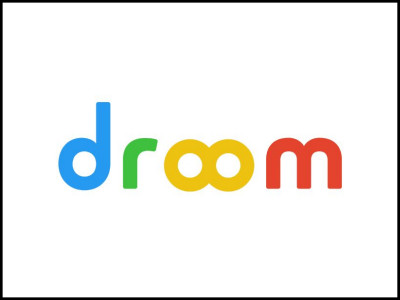Introduction
Droom is a tech and data science-driven online automobile marketplace, which offers 21st-century experience in buying and selling automobiles in India. Droom is a technology and data science company that facilitates automobile buying and selling online through a combination of our asset-light automobile e-commerce platform along with a technology-driven vertically integrated proprietary ecosystem of products and services for the automobile industry. The business model of Droom involves its business plan, Revenue model, its competitors, SWOT Analysis and many more.
Droom has built an entire eco-system around used automobiles for the digital economy, including Orange Book Value (used vehicle pricing engine), ECO (1,000+ points vehicle inspection), History, Discovery (dozens of pre-buying research tools), and Financial Services (Loan & Insurance). Droom is founded by Sandeep Aggarwal, it is a Singapore Holding Company with its subsidiary in India and United States. It is a web-based stage that associates purchasers and dealers of trade-in vehicles, new vehicles, bikes, and even airplanes.
Business Plan
Droom’s plan of action is separated into four classes: business to the purchaser, client to client, client to the business, and business to business. The business to customer model records for most of its income (approx. 88%), with the client to business and client to client models contributing 10%, and the business to plan of action representing the excess 2%.
Droom’s business model is divided into four categories: business to consumer, customer to customer, customer to the business, and business to business
The company has turned into the main vehicle passage worldwide to house the whole biological system of the car, with extra components like value, finance, history, instruments, and commercial center. The company sent off an estimating framework for vehicles called Orange book esteem (OBV). It is the first organization to present this component in Quite a while. This helps sellers and buyers in deciding the fair market cost of autos. This is information-driven and fair-minded. Shoppers can likewise utilize this apparatus to check whether a vehicle is accessible.
Droom has become the first car gateway worldwide to house the entire ecosystem of the automotive, with additional elements such as price, finance, history, tools, and marketplace.
Revenue Model
Droom mainly has four sources to earn revenue that are, Service fees, Premium tools, Subscription, and Advertisements. The service fee is the main source of revenue, and this is charged on every successful transaction on the platform. This varies according to the vehicle type.
The subscription plan is offered to various big auto dealers, and the company provides them with online products and services. Its premium tools include OBV, Droom credit, etc. Droom also earns a lump of money from advertisements as it advertises different auto brands on its platform. This also helps in doubling traffic on the platform.
There are different ways through which it earns money. It takes 1.5% as charges of the car’s price which is being sold by its platform and also, 2% charges for two-wheelers. For other automobile services like warranty and insurance, it charges 12%.
Competitors
There are a number of competitors for Droom:
SWOT Analysis
Strength
Evolving industry: The automobile industry is a highly growing industry, continuously contributing to growth and development. Droom has the ability to gain popularity in the this evolving industry. The ease and quality of life improvements the automotive industry brings will only increase the demand for vehicles in the future.
Constant product innovation & technological advancement: With the advent of E-vehicles & alternative fuel such as Shell gas, CNG, and others, automobile companies are increasing R&D expenditure to drive the next phase of growth through the use of renewable sources of energy which may be solar, wind, etc.
Manufacturing facilities in Asian nations to control cost: To monitor cost and to manage shrinking margins, automobile companies like Harley, Volvo, Bharat Benz, etc. are building their manufacturing facilities in developing nations like India and China. These nations have a cheap workforce, are high in resources, and are nearer to developed economies. These are ideal conditions for an emerging market.
Weakness
Bargaining power of consumers: Over the last 3-4 decades the automobile market has shifted from a demand to a supply market. Availability of a considerable number of variants, stiff competition between them, and a long list of alternatives to choose from has given power to customers to decide whatever they like.
Government regulations: Regulations like excise duty, no entry of outside vehicles in the state, decreasing number of the validity of registration period, and volatility in the fuel prices pose considerable challenges to automobile companies. These factors also affect the growth of the industry.
High employee turnover: The employee turnover in the automobile industry is found to be higher when compared to several other sectors. Furthermore, attracting and retaining employees in the automotive industry can be very challenging, especially in the case where competitors are doing what they can to lure the best talent.
Opportunities
Fuel-efficient vehicles: Optimization of fuel-driven combustion engines and cost efficiency programs are excellent opportunities for the automobile market. Emerging markets will be the primary growth drivers for a long time to come, and hence fuel-efficient cars are the need of the hour.
Changing lifestyle & customer groups: The increased availability of data and information, shift in consumer demand, and expanded regulatory requirements for safety and fuel economy will fuel the growth of this industry.
Market expansion: Entering new markets like Asian & BRIC nations will skyrocket the demand for vehicles. Furthermore, other markets are also likely to emerge soon.
Threats
Rising competition: Presence of a large number of players in the automobile industry results in intense competition and companies eating into other’s share, leaving little scope for new players.
Sluggish economy: Macroeconomic uncertainty, recession, unemployment, etc. are the economic factors which will daunt the industry for an extended period.
Volatility in fuel prices: For the consumer segment, fluctuations in fuel prices remains the determining factor for growth. Also, government regulations pertaining to the use of alternative fuels like CNG and Shell gas is also affecting the inventories.
Conclusion
Droom follows a business model that has strong integration with new technology and evolving models. Along with sound delivery of services, it also pays attention to unique promotional and advertising activities.




